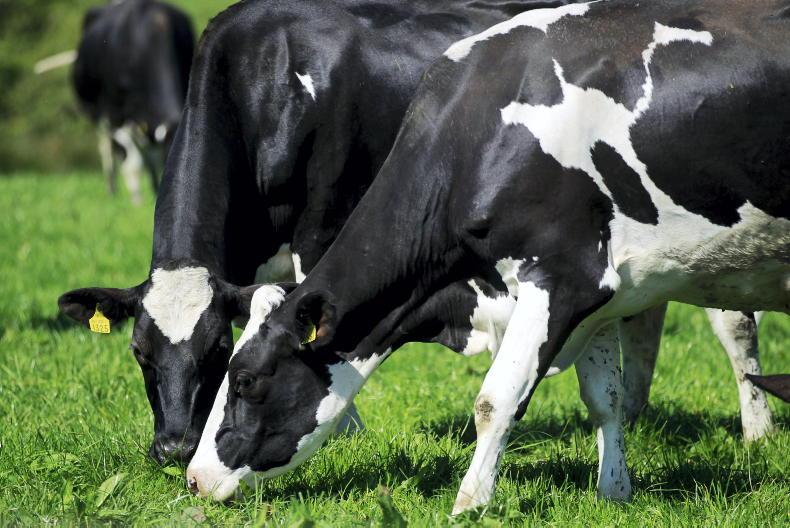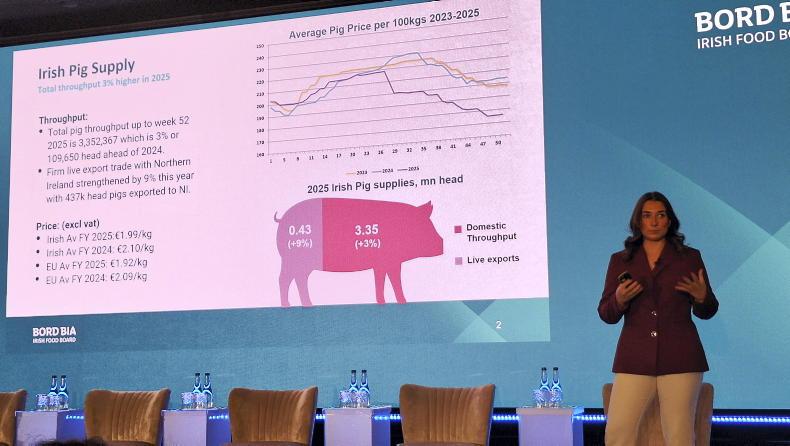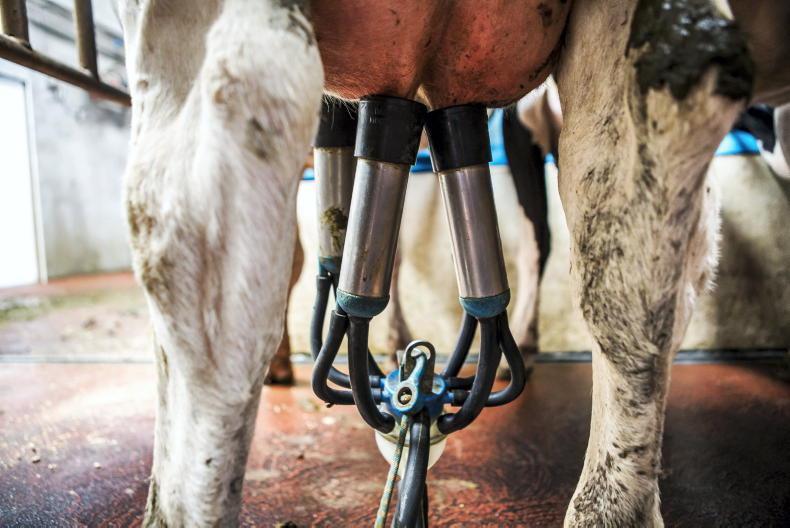There will be “strong” milk prices until the end of 2022 for European dairy farmers, says Europe, Middle East and Africa (EMEA) head of dairy and food consulting at Stonex John Lancaster.
Predicting prices to stay at high levels for the remainder of the year, he said that despite increased input costs, “margins look good for [dairy] farmers”.
However, he said that, globally, there will be a reduction in milk prices in the backend of this year, but suggested that prices will begin to increase again in 2023.
Stonex provides expertise to its clients on global markets.
Outlining global dairy markets to Japanese importers of Irish dairy produce in Tokyo on Thursday, Lancaster also described how there will likely be dairy production increases across the world’s major exporters in the fourth quarter of 2022 and said this will then continue into 2023.
More NZ milk
He said: “We do expect to see more milk out of New Zealand this year” and explained that, assuming normal weather, this will be in the region of 3% to 4%.
However, he noted that such a production increase would be off the back of a 4% reduction in New Zealand last year.
Lancaster said that for dairy farmers in the US, “margins are pulling back, but looking good” and that, going forward, he thinks “we will see an increase in US milk production”.

New Zealand is set to increase its dairy production by 3% to 4% this year, after a 4% drop last year, according to Stonex.
Overall, the dairy market analyst said the moderate milk supply growth forecasted in New Zealand and the EU, combined with increases in production in the US, Australia and Argentina, will lead to greater overall supply over the coming months and, therefore, will affect milk prices.
China’s impact
The Stonex food and dairy expert also described the impact of a changing Chinese market for global dairy demand.
Due to China’s ongoing COVID-19 restrictions, its “[dairy] imports have been collapsing” and this is accounting for most of the decline in world dairy prices expected for the remainder of 2022, he said.
Lancaster said that in recent months, COVID-19 lockdowns and economic pressures on consumers in China have led to decreased demand for dairy imports in the country.
He said that China’s imports of dairy powder in July 2022 were down 50% on the same month in 2021.
However, despite the difficulties in China, he said there will continue to be increased dairy demand in and export volumes to other countries.
He said demand and volumes will continue to increase for the rest of 2022 and will “level out” at higher levels in 2023.
Farm pressures
Despite increasing global demand for dairy produce, Lancaster said European farmers haven’t been able to respond with increased production levels due to feed costs and environmental policy pressures curtailing output.
Read more
Dairy Trends: cheese prices show upward turn in steady market
There will be “strong” milk prices until the end of 2022 for European dairy farmers, says Europe, Middle East and Africa (EMEA) head of dairy and food consulting at Stonex John Lancaster.
Predicting prices to stay at high levels for the remainder of the year, he said that despite increased input costs, “margins look good for [dairy] farmers”.
However, he said that, globally, there will be a reduction in milk prices in the backend of this year, but suggested that prices will begin to increase again in 2023.
Stonex provides expertise to its clients on global markets.
Outlining global dairy markets to Japanese importers of Irish dairy produce in Tokyo on Thursday, Lancaster also described how there will likely be dairy production increases across the world’s major exporters in the fourth quarter of 2022 and said this will then continue into 2023.
More NZ milk
He said: “We do expect to see more milk out of New Zealand this year” and explained that, assuming normal weather, this will be in the region of 3% to 4%.
However, he noted that such a production increase would be off the back of a 4% reduction in New Zealand last year.
Lancaster said that for dairy farmers in the US, “margins are pulling back, but looking good” and that, going forward, he thinks “we will see an increase in US milk production”.

New Zealand is set to increase its dairy production by 3% to 4% this year, after a 4% drop last year, according to Stonex.
Overall, the dairy market analyst said the moderate milk supply growth forecasted in New Zealand and the EU, combined with increases in production in the US, Australia and Argentina, will lead to greater overall supply over the coming months and, therefore, will affect milk prices.
China’s impact
The Stonex food and dairy expert also described the impact of a changing Chinese market for global dairy demand.
Due to China’s ongoing COVID-19 restrictions, its “[dairy] imports have been collapsing” and this is accounting for most of the decline in world dairy prices expected for the remainder of 2022, he said.
Lancaster said that in recent months, COVID-19 lockdowns and economic pressures on consumers in China have led to decreased demand for dairy imports in the country.
He said that China’s imports of dairy powder in July 2022 were down 50% on the same month in 2021.
However, despite the difficulties in China, he said there will continue to be increased dairy demand in and export volumes to other countries.
He said demand and volumes will continue to increase for the rest of 2022 and will “level out” at higher levels in 2023.
Farm pressures
Despite increasing global demand for dairy produce, Lancaster said European farmers haven’t been able to respond with increased production levels due to feed costs and environmental policy pressures curtailing output.
Read more
Dairy Trends: cheese prices show upward turn in steady market











SHARING OPTIONS